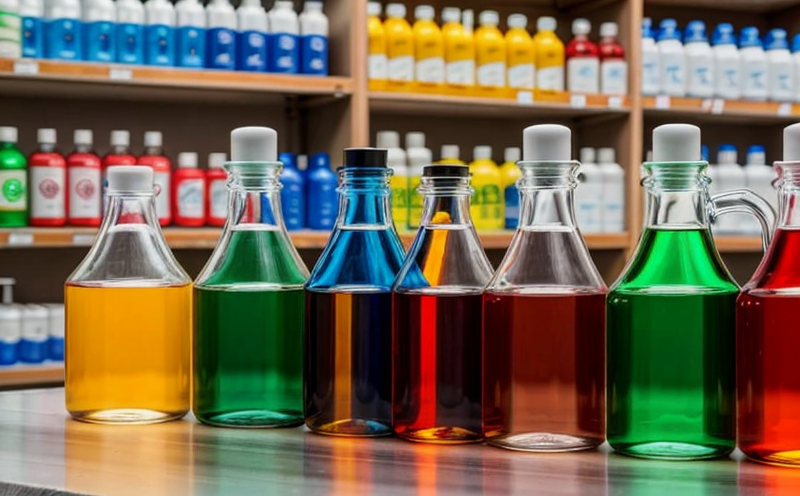OEKO TEX Azo dye compliance testing protocol
The OEKO TEX Standard 100, which is one of the world’s leading labels for textiles and related products, has set stringent guidelines to ensure consumer safety. Among these are regulations regarding azo dyes, a class of synthetic organic compounds widely used in textile manufacturing due to their vibrant coloration properties. Azo dyes can potentially release harmful aromatic amine derivatives under certain conditions, posing risks to human health. Compliance with the OEKO TEX Standard 100 ensures that products do not contain these restricted substances.
The testing protocol for azo dye compliance involves several steps which are meticulously designed to detect the presence of these hazardous compounds. The process begins with sample selection and preparation where textiles undergo thorough inspection to ensure representative samples are selected. Pre-treatment might be necessary depending on the type of textile, such as washing or rinsing garments.
The core of this protocol includes advanced spectroscopic analysis techniques like High Performance Liquid Chromatography (HPLC) coupled with Mass Spectrometry (MS). This sophisticated instrumentation allows for precise identification and quantification of azo dye breakdown products. The method involves extracting potential aromatic amines from the sample, followed by derivatization if required, then injecting it into an HPLC-MS system to analyze peaks corresponding to restricted substances.
Another crucial step is the evaluation against the list provided in the OEKO TEX Standard 100. This list includes around 200 aromatic amines categorized as restricted under this standard. The testing laboratory ensures that all extracted compounds are compared meticulously against this database using spectral matching and retention times. Should any matches be found, further confirmation tests may be conducted to avoid false positives.
The final stage involves issuing an official report detailing the results of the analysis. This document serves as a crucial reference for quality managers, compliance officers, and R&D engineers responsible for ensuring product safety and regulatory adherence. Reports typically include detailed information about sample preparation, analytical methods used, observed compounds, and whether they meet or fail the standard.
Compliance with OEKO TEX Azo dye testing is not just a requirement but also an assurance of high-quality products that meet global standards. By adhering to this rigorous protocol, manufacturers can protect their brand reputation and ensure consumer trust. This process underscores the importance of ongoing vigilance in maintaining stringent quality control measures throughout the supply chain.
The following table provides an overview of industries where OEKO TEX Azo dye testing is particularly relevant:
| Industry | Textile Type | Azo Dyes Testing Frequency |
|---|---|---|
| Fashion Apparel | Clothing, Accessories | Annually or after significant process changes |
| Homes & Interiors | Furniture Covers, Upholstery | Every 2 years or as needed |
| Linen and Towels | Bath Linens, Kitchen Towels | Annually |
| Sportswear | Activewear, Sports Gear | Every 18 months to two years |
| Medical Textiles | Hospitals Linens, Gowns | Annually or as per regulatory changes |
Industry Applications
The OEKO TEX Azo dye compliance testing protocol finds extensive application across various sectors within the textile industry. Fashion apparel manufacturers, particularly those involved in high-end or luxury brands, rely heavily on this testing to maintain their product’s reputation for quality and safety.
In homes & interiors, furniture covers and upholstery made from textiles often undergo rigorous testing as they come into direct contact with consumers. Hospitals and medical facilities also require strict adherence to azo dye testing due to the high-risk nature of their products. The presence of harmful substances could lead to adverse health effects among patients or staff.
For sportswear manufacturers, ensuring that their products comply with OEKO TEX standards is essential given the physical activities involved which can cause increased skin exposure to textiles. Linen and towel producers must ensure their products meet these stringent requirements as they are frequently used in environments where hygiene is critical.
The testing protocol not only helps prevent health hazards but also supports sustainable practices by encouraging manufacturers to use safer alternatives. By reducing the risk of restricted substances entering the market, this service contributes significantly towards maintaining ethical business practices and protecting public health.
International Acceptance and Recognition
The OEKO TEX Azo dye compliance testing protocol enjoys widespread acceptance across numerous countries due to its robustness and reliability. Many governments and regulatory bodies recognize this standard as a benchmark for textile safety, ensuring that products conforming to it are deemed safe for use by consumers.
Notably, the European Union (EU) has incorporated the OEKO TEX Standard 100 into its Reach regulations, which govern chemicals used in articles placed on the EU market. This integration underscores the importance of compliance with these testing protocols within Europe’s largest single market. Similarly, countries like Japan and South Korea have adopted similar standards to protect their citizens from potentially harmful substances.
Compliance with OEKO TEX also offers significant benefits beyond mere regulatory adherence; it enhances brand reputation among consumers who value safety and quality above all else. Companies that adhere strictly to these protocols often find themselves at the forefront of innovation, continuously seeking safer materials and processes.
Environmental and Sustainability Contributions
The OEKO TEX Azo dye compliance testing protocol plays a vital role in promoting environmental sustainability within the textile industry. By ensuring that products do not contain harmful azo dyes, this service helps reduce pollution risks both during manufacturing processes and after product disposal.
Manufacturing facilities that pass rigorous OEKO TEX testing contribute positively to reducing waste generation since they use safer dyes which are less likely to leach into water supplies. Additionally, by promoting the use of eco-friendly practices in dyeing and finishing operations, this service encourages a circular economy approach where resources are utilized efficiently without causing harm.
Furthermore, OEKO TEX compliance fosters transparency throughout supply chains encouraging companies to source materials responsibly from sustainable sources. This emphasis on responsible sourcing contributes significantly towards reducing deforestation, water scarcity issues, and other environmental challenges associated with traditional textile production methods.





